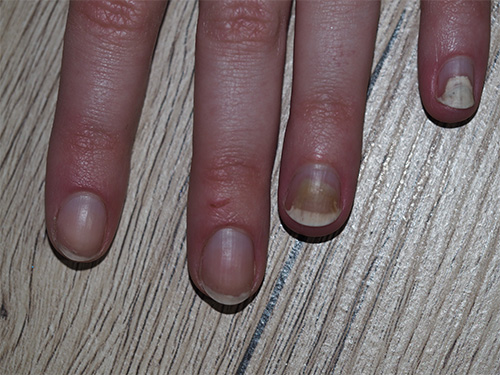Onycholysis
Onycholysis is a nail disorder in which the distal nail bed is affected, causing the nail plate to separate from the nail bed and become opaque. Many conditions cause onycholysis, but the most common are psoriasis and trauma. See here for photos of onycholysis.
The space beneath the nail plate accumulates moisture and debris. Attempts to clean this space aggravate the condition by extending the onycholysis proximally.
Advise patients to:
- keep the nail short
- avoid inserting objects beneath the nail to remove debris
- keep hands out of water
- use a mild soap-free wash and shampoo.
Take nail clippings or scrapings from the distal nail and send for microbiology.
Often Candida colonises the space between the nail bed and the nail plate, and grows up into the nail plate. Candidal infection secondary to onycholysis is more common in fingernails than in toenails. The infection needs to be treated before the nail plate can reattach. If Candida infection is confirmed, start oral therapy. Use:
1fluconazole 150 mg to 300 mg orally, once weekly, for 3 months or until clinical clearance fluconazole fluconazole fluconazole
OR
2itraconazole (Itracap, Itranox or other brands bioequivalent to Sporanox capsules) 200 mg orally, twice daily for 1 week every month, for 3 months or until clinical clearance1 itraconazole itraconazole itraconazole
OR
2itraconazole (Lozanoc capsules) 100 mg orally, twice daily for 1 week every month, for 3 months or until clinical clearance1. itraconazole itraconazole itraconazole
Colonisation with Pseudomonas aeruginosa is also common, causing olive-green discolouration of the nail plate. If P. aeruginosa is confirmed, eradicate with:
acetic acid 2% (white vinegar diluted 1:1 with water) topically, soaking nails for 5 to 10 minutes twice daily for 3 to 4 weeks. acetic acid acetic acid acetic acid
Refer unresponsive cases for dermatologist advice.


